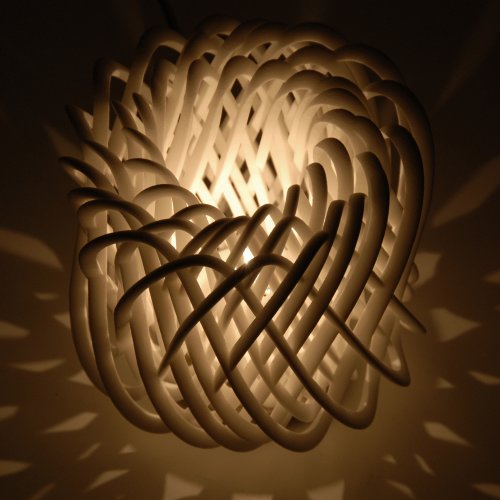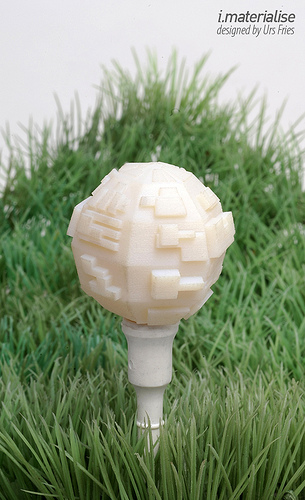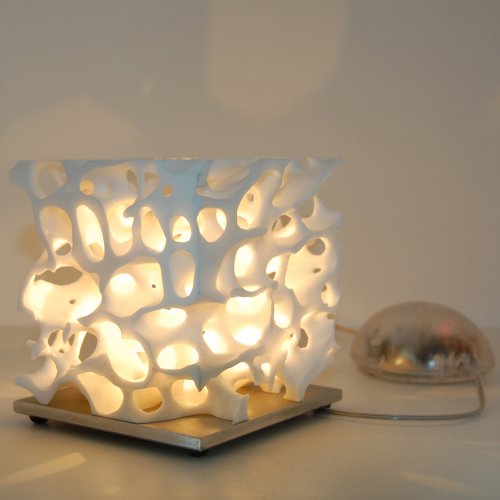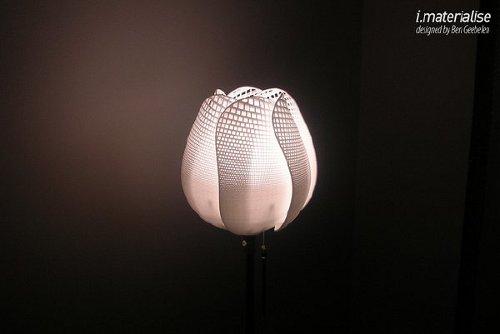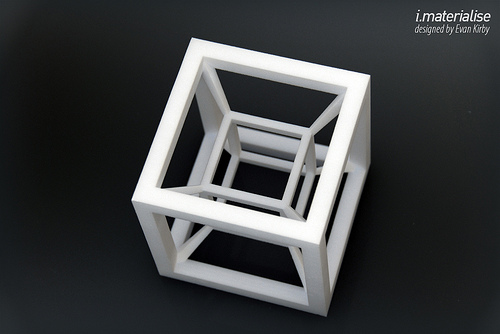The 6 Geekiest 3D Prints Ever
At Materialise we’re an unabashedly geeky company. We have more engineers than non-engineers and you’re more likely to run into a medical researcher, PhD, cryptographer, software devloper or a structural engineer than a marketing person during lunch (last time I checked we had 6 marketing people out of a 1000 employees). So when Materialise employees use i.materialise we exepct some geeky 3D prints. We combed through them all and came up with what we believe to be the 6 geekiest 3D prints of all time.
6. The Sinusoid Lamp. by Volodymr Chabanenko (a copy is currently serving as my desk lamp at the office!). “I suppose that a figure generated by mathematical equations looks better than something I would be able to design myself. I am just better at mathematics than at 3d modeling. I spent a few days using wxMaxima to look for the set of equations. I finally found that an ordinary sinusoid being stranded to a cylindrical shape looks pretty good.”
5. The Greeble Effect by Urs Fries. “This model describes or deals with the Greeble effect. A Greeble adds something superfluous or redundant to a surface, but redundancy isn”t always superfluous from an aesthetical point of view.”
4. Trabecular Bone Lamp by Dimitri van Lessen. “We, human beings, are very good in creating our own new shapes and forms, but I think that the most beautiful and complex shapes are still to be found in nature itself. Now, some time ago, one of my colleagues created a 3D model of a trabecular bone. This model had such a complex and amazing internal structure that I was immediately fascinated by it. Since the moment it was made, I always thought this would be a cool model to use as a lamp. For me, this trabecular bone lamp is the perfect combination of “medical meets design”. Due to its complex structure, it is only possible to print this design via 3d printing. Knowing this, I went to look for a nice dataset which I could use to make the design. Once I found one, I realized I was too clumsy in 3D model software to edit this set. So I asked one of my friends, who’s a biomedical engineer, to help me adapting the dataset to a nice square that could be used for the lamp.”
3. Flower Equation by Oleg Kurtsev. “My flower lamp is made up of parametric equations. I used free software called Maxima to develop the equations for the lamp trunk. The equations for band orientation and band thickness were implemented directly in MS Visual Studio by trial and error. It took me several experiments to finalize my design, but I like the result.”
2. TulipK lamp by Ben Geeblen. This one we have mentioned before and there are more images and info here. “TulipK is a lamp shade I designed as a present to my wife. Its shape is inspired by a picture of tulips we had on our wedding invitation. I designed it fully in 3-matic and Excel (yes, I consider that design software too). The holes were designed with Excel. I wrote a spread sheet to determine the locations of all 2374 holes punching through one petal and I created an STL for those. After that it was just a question of doing a Boolean subtraction and adding the rim.”
1. Shadow of a Tesser Cube by Evan Kirby “Having been a nerd my entire life, I decided to design something that befits my station in life. I wanted to design something that only nerds would understand. I came up with a tesser cube or more exactly the “shadow” of a tesser cube. A tesser cube is a four dimensional object. Since we only can visualize three dimensions, I can’t actually make the tesser cube. That’s why I can only make a shadow. Just as a shadow of myself (a three dimensional object) is two dimensional, so the shadow of a four dimensional object is three dimensional. So, I made one long, rectangular box and then started making copies, mirroring and such to get my tesser cube shadow.”
Recommended Articles
No related posts.


